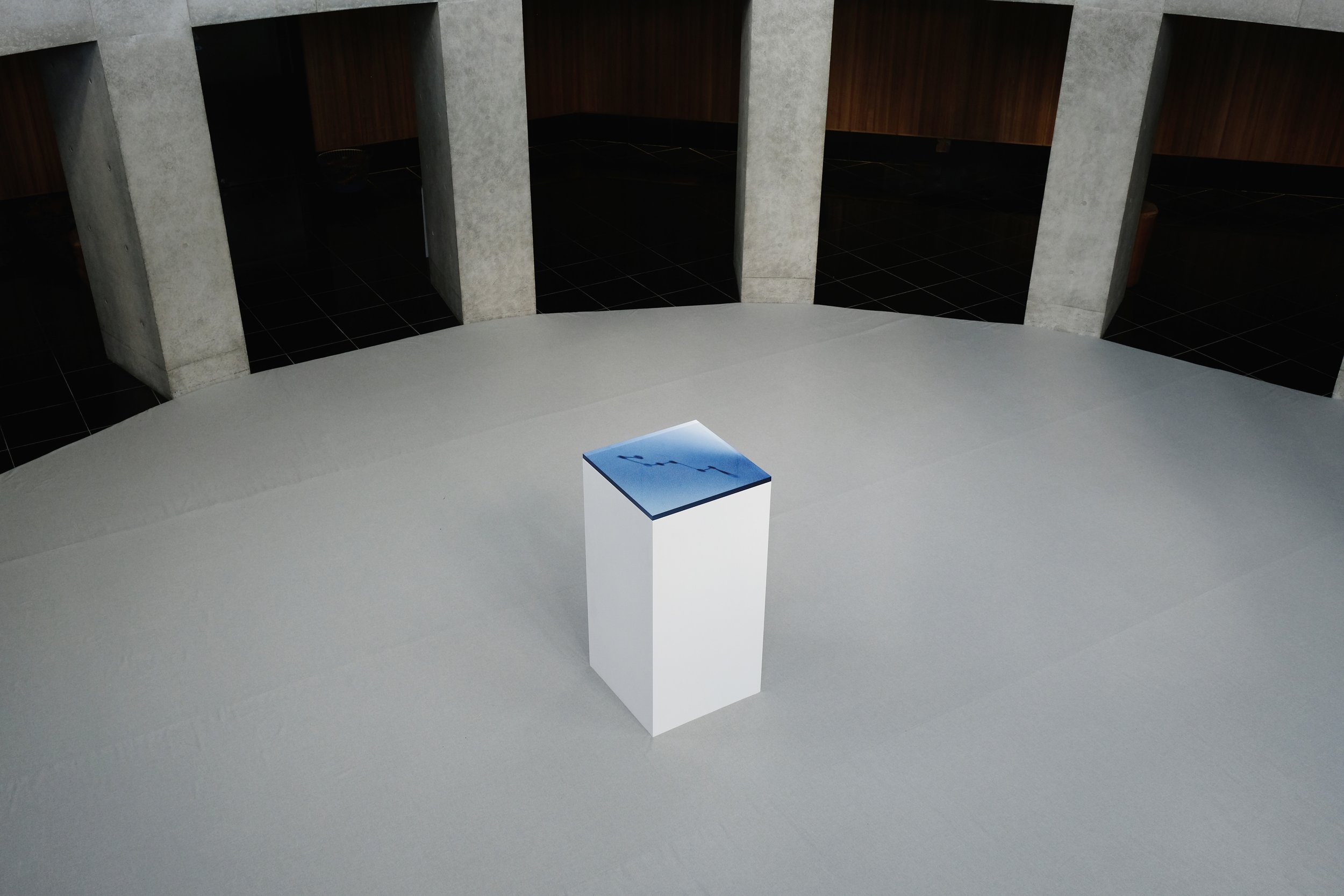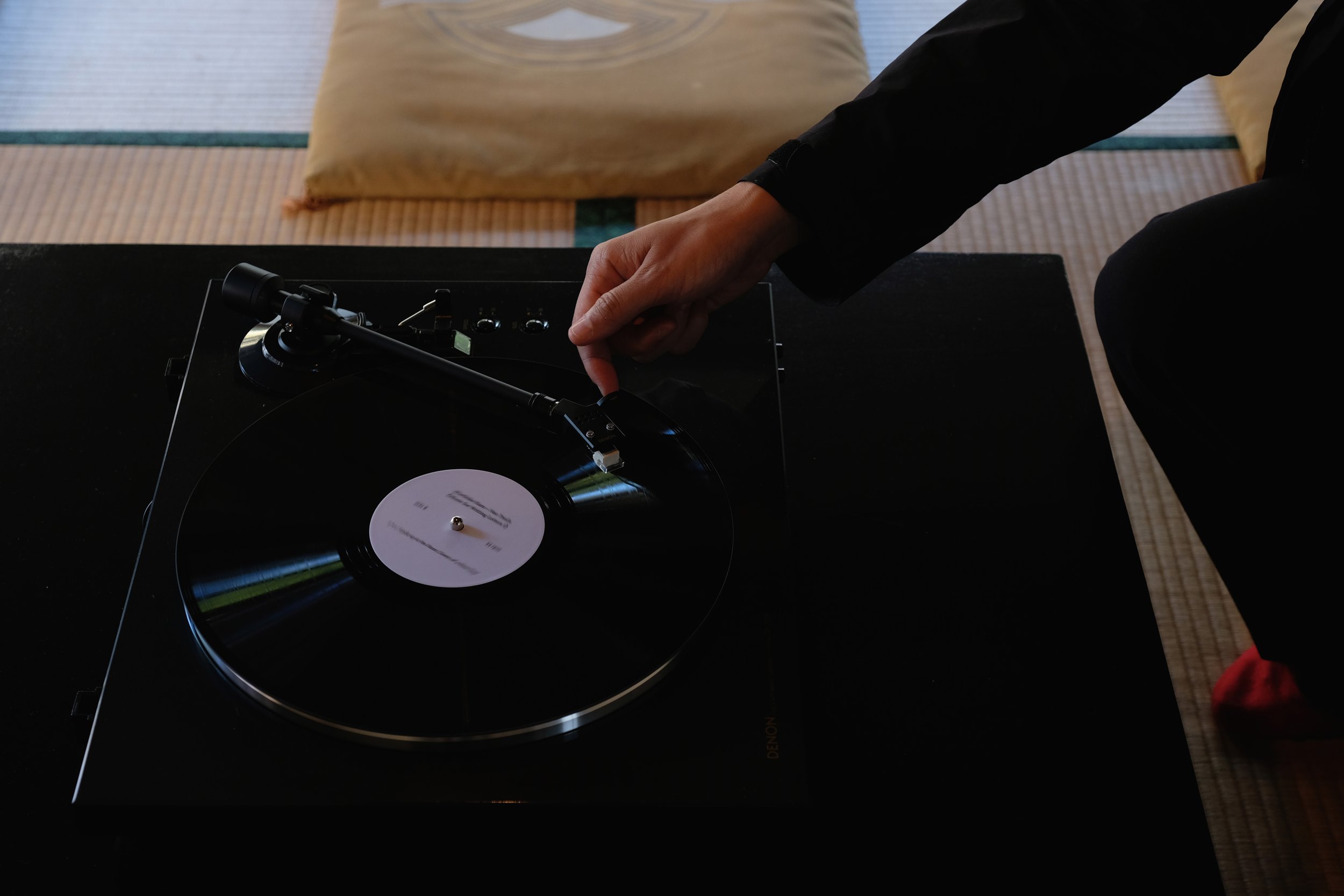About “Stella ‒ Music for Writing Letters”
“Stella ‒ Music for Writing Letters” is music created for people who write letters. Its origin was the installation work “7 + 1 / Look up at the Stars; Dawn of a New Day” (At Noseden Art Line Festival 2021) by Marihiko Hara, musician and Nao Tsuda, photographer. <Stella>, a Japanese-style room with a good mountain view for writing letters, was located at a venue of the art festival. There the music was presented with writing paper, envelopes and post cards made exclusively for that occasion. The <Stella> project began during the covid- 19 pandemic as a place of comfort for people who couldnʼt meet loved ones. Later the music was recreated and we have come to release it.
Myokenzan mountain, where the art festival was held, is on the prefectural border between Osaka and Hyogo, and it is well known as the original site of the North Star worship since ancient times. The North Star, shining especially in the night sky, has long been a landmark for people travelling across deserts or oceans to know their location. This star is said to be about 431 light years away from the earth. That is to say, the light we are looking at was emitted 431 years ago i.e. in 1590. In the year of 1590, four boys of the Mission of Youths, or Tensho keno shonen shisetsu, returned to Japan, after being sent to Rome from Nagasaki for the purpose of propagation of Christianity. Their travels made opportunities for European people to know the existence of Japan and after they had come home for Japanese people to know European culture.
In the process of creating this work, we came to know that Gutenbergʼs Printing Press and some western musical instruments had been in the cargo the missionaries had brought back. We used the technique of the original printing press to produce the writing paper and envelopes. And we also used the font that was popular during the time of Gutenberg. Because the word “stella” means “star” in Italian, we named the letter-writing festival space <Stella>.
The pictures on the post cards were taken in Shounkaku in the ground of temple by photographer Tsuda. In one of his pictures, light coming through a windowʼs star patterns, the Big Dipper, reflect an image on the ground. It is used for the record sleeve.
This record includes improvisation pieces, sound works, and piano pieces which have the motifs of 1 and 7 in the structures such as musical pitches, the length of sounds, etc. Also included is “Mille Regretz” by Josquin des Prez, which is rumored to have been performed, after the Missionʼs return, in front of Hideyoshi Toyotomi, who ruled Japan at that time.

















